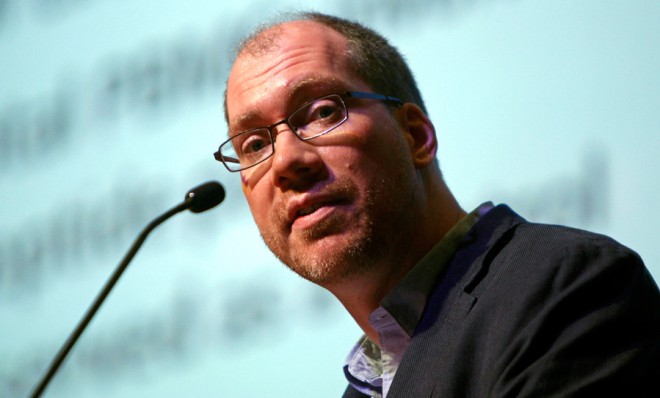Can stem-cell transplants eliminate HIV?
Doctors report that a cancer-fighting technique helped wipe out the virus in two Boston men

Timothy Brown shocked the world in 2011 when his doctors announced that the HIV virus he had been carrying since 1995 had miraculously disappeared. The "Berlin patient," as he came to be known, was the recipient of a life-saving stem-cell transplant from a bone marrow donor, a procedure that was used to treat Brown for leukemia. And with that, doctors suspected that they had stumbled upon a cure for HIV.
In efforts to duplicate Brown's success, Dr. Timothy Henrich of Brigham and Women's Hospital and Harvard Medical School in Boston set out to find HIV patients with either leukemia or lymphoma. The initial results were first announced at an international AIDS conference last July, when Henrich and his colleagues reported that two Boston men with lymphoma, who did not wish to have their names revealed to the public, had flushed the virus from their bodies after undergoing stem-cell transplants to replace their ravaged bone marrow.
Doctors just announced that the patients, who were on long-term drug therapy to treat their HIV, still possessed undetectable levels of the virus in their blood several months after undergoing the procedure.
The Week
Escape your echo chamber. Get the facts behind the news, plus analysis from multiple perspectives.

Sign up for The Week's Free Newsletters
From our morning news briefing to a weekly Good News Newsletter, get the best of The Week delivered directly to your inbox.
From our morning news briefing to a weekly Good News Newsletter, get the best of The Week delivered directly to your inbox.
While it is too early to say for sure that the virus has disappeared from their bodies altogether, one patient has now been off antiretroviral drug treatment for 15 weeks and the other for seven weeks. [Reuters]
"We looked very deeply this time — much more deeply than last time," Henrich told NBC News. Researchers examined the immune system cells that HIV attacks (particularly the CD4 and CD8 T-cells), and samples in the patients' rectal tissue for evidence of the virus, but came up empty. "We don't even know where some of the HIV might be hiding," said Henrich.
In Brown's instance, doctors used stem cells possessing a rare genetic mutation called CC45 delta 32, which is typically found in people resistant to the HIV virus. The two Boston patients, however, received stem cells from donors without this mutation. According to Nature, it could be "that an immune response called graft-versus-host disease — a post-transplant reaction in which donated cells kill off a patient's own cells — may have then wiped out the patients' HIV reservoirs, potentially curing the men."
However, doctors are hesitant to pronounce either case a resounding "cure."
"There never is an 'aha' moment when you suddenly can declare a cure," said Kevin Robert Frost, CEO of the Foundation for AIDS Research (amFAR), which helped pay for the study. "It is impossible to prove the absence of something."
A free daily email with the biggest news stories of the day – and the best features from TheWeek.com
That said, stem-cell transplants from an unrelated donor are risky and expensive: In Brown's case $250,000. As New York noted in a 2011 profile on the Berlin patient, the procedure is "a reasonable risk only in the face of imminent death."

